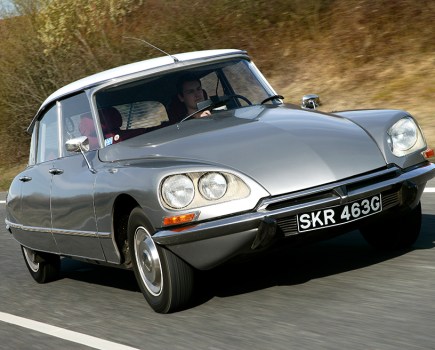The main downside of a TR4 over a TR3 is that they are heavier and therefore thirstier. 35mpg is within easy reach of a TR3, but a TR4 will struggle to better 25mpg – especially if overdrive is not fitted. Petrol costs don’t account for most of the ownership cost though, and appreciating values may make up for it!
On the plus side, these are great cars for the home mechanic. There’s very little you have to farm out if you’re happy to have a go. That can certainly help keep costs down, though there’s a huge bank of specialists to call on if you so desire. Excellent club support is another bonus. Parts availability certainly shouldn’t be an issue and the hardy mechanicals mean they can tolerate regular use – something made more attractive by the better hood and winding windows that earlier TRs lack.
BASIC SERVICING
A key point of contention is what lubricant to use for the trunnions. Originally, heavy oil was specified but many claim that modern greases are easily up to the job. Some even use both, hoping the grease will help keep the oil in place. Whatever you use, make sure you use it every 1000 miles, or at the very least annually. Dry trunnions can and will fail. There are other grease points to keep an eye on, such as the propshaft – an owner’s manual or club forums can help guide you to all 20-odd of them.
A good 20w50 engine oil is recommended and fitting a spin-on filter kit will make filter replacement much less messy. The old cartridge-type offers plenty of scope for spillage. Annoyingly, you need just over five litres of oil for a complete engine fill. It’s worth draining and refilling the gearbox with EP90 every couple of years. The ignition system is all very straightforward.
UPGRADES
We certainly can’t fit all the details of every upgrade into this piece, so you’ll have to make do with some of the highlights. Firstly, carburettors: The SU HS6s – replaced in production by Zenith-Strombergs – are still very popular as they’re very easy to work on. However, Dellorto side-draughts make a noisy alternative, and Webers can unleash more power. A performance exhaust manifold makes a difference too – there are quite a few out there. On a TR4, the TR4A manifold can be an improvement. They were improved from the factory to counter-act the weight increase.
If the performance is going up, brake boosting would seem a good idea and there are many disc and pad upgrade options out there. Similarly, tyre options are wide-ranging. Many opt to fit wire wheels – optional when new – though the Minilite-style is frustratingly fashionable. Do consider keeping one on steel wheels and hubcaps, though – they look remarkably quaint these days!
Five-speed gearbox options are available too. Ford or Toyota units are usually used – you can expect to pay around £2000 for a conversion kit, but you’ll need to find your own gearbox.
In terms of suspension, most changes are done at the front and it’s an exhaustive list. Better dampers, firmer springs, anti-roll bars and links that give more negative camber are all possibilities. On the TR4A, some find telescopic dampers give an advantage over the old lever-arm type, but to be honest, replacing tired old dampers with refurbished ones in the same style will also make quite a difference and may be cheaper and just as effective. Be warned that even the TR4As are pretty firmly sprung. The difference in springing doesn’t necessarily generate a huge difference at the wheel over most terrain.
Replacing the dynamo with an alternator is sensible, especially if you’re fitting an electric cooling fan or halogen headlamps.
WHAT’S LIKE TO OWN A TR4A?
Paul Tunnadine of the TR Register has owned his TR4A since 1979. “I’ve probably driven over 200,000 miles in it. When you’re looking for one, most faults are obvious and most can be sorted out. There isn’t always that much choice as there aren’t loads for sale. They’re great long distance tourers though. I used to regularly take mine to Italy. If you’re getting one restored, pick someone who knows what they’re doing. If the sills are being replaced, the car has to effectively be broken in two. It has to be done properly.”
TECH SPEC
Triumph TR4A
ENGINE: 2138cc
POWER: 100bhp
0-60mph: 10.9 secs
TOP SPEED: 104mph
ECONOMY: 22-25mpg




